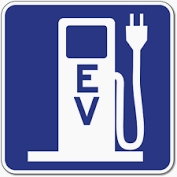Fairfield Set to Increase EV Charging Infrastructure
Fairfield is in the process of expanding its electric vehicle (EV) charging infrastructure at no cost to the city. The funding is provided by the Ohio Kentucky Indiana (OKI) Regional Council of Governments’ Carbon Reduction Grant program. They are also seeking additional funds for more stations from the same council.
EV Charging Station Installations
The installation of EV charging stations is part of a broader city planning initiative. Earlier this year, OKI granted Fairfield’s funding request for three Level 2 dual-port charging stations. These are scheduled to be installed in Waterworks Park, the Fairfield Lane Library, and Harbin Park this fall.
As part of the second round of OKI’s Carbon Reduction Grant program, Fairfield is aiming to secure funding for additional Level 2 charging stations. If successful, these will be installed at Waterworks Park, the Community Arts Center, and the Justice Center. The total cost, including contingency funding, is expected to be a little over $600,000, with no matching funds from Fairfield.
Existing EV Charging Options in Fairfield
The current EV charging options within Fairfield are limited, with stations at two local car dealerships, a hospital, and two supermarkets. More publicly and privately owned EV stations are available in neighboring West Chester and Liberty townships, and in Hamilton to the north.
At present, Fairfield has one Level 2 dual-port charging station at the Community Arts Center. This station is free to use and was chosen due to its safe location, proximity to a heavily traveled route, and the fact it was installed on city property at no local cost. Once the new stations are operational, a fee will be introduced according to city authorities.
Hamilton’s EV Charging Infrastructure
Neighboring Hamilton’s publicly owned EV charging stations are serviced by ChargePoint. The city purchased five Level 2 dual-port stations in 2021 using an Ohio EPA grant. Hamilton was also awarded a $441,000 grant through OKI last year to install six Level 3 EV fast chargers.
The planned charging station locations are in high-traffic areas and are expected to be used frequently. The Level 3 charging stations are currently in the procurement phase, with installation planned before the end of the year. Officials are also pursuing additional grant opportunities to further expand the city’s EV infrastructure.
Strategic EV Infrastructure Expansion
The push for more EV charging stations aligns with both Fairfield and Hamilton’s goals to prepare for the increase in electric vehicles. Fairfield City Council member Tim Meyer expressed approval of the swift action taken to expand the city’s charging infrastructure, which aligns with the city’s Fairfield Forward Comprehensive Plan and draft Fairfield Sustains plan.
Public Works Director Ben Mann emphasized that investigating electric vehicle charging stations is specifically mentioned in the plan. He expressed belief in the grant’s merit and the potential benefits the EV charging stations could bring to the local economy.
Original Story at www.journal-news.com
